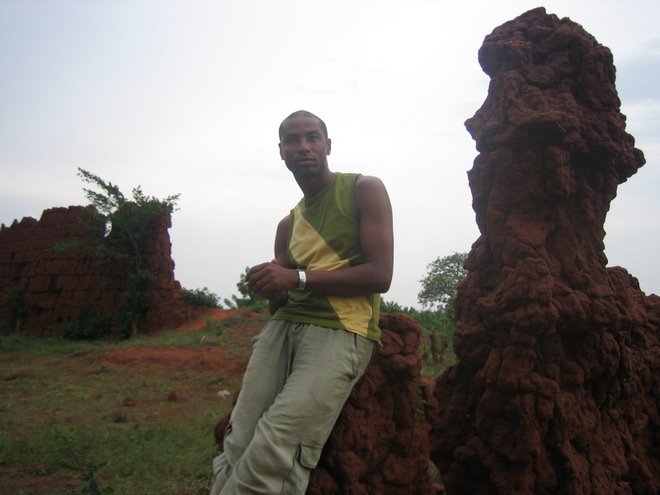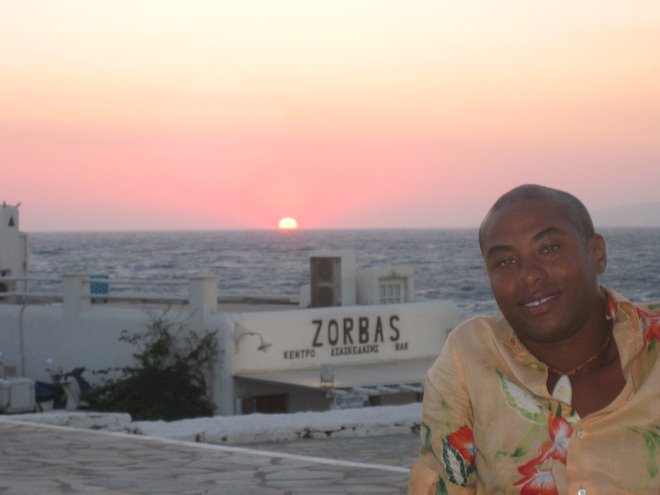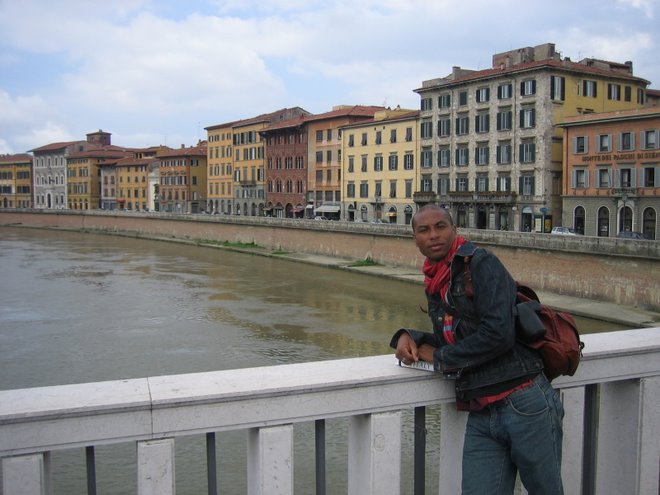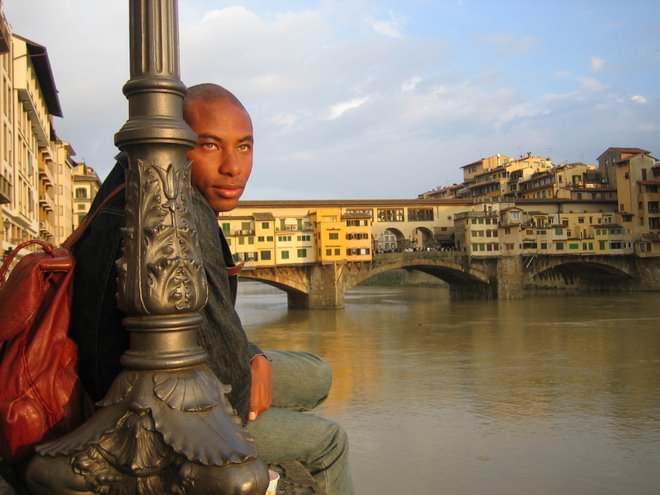16 Nov 2006
Thanks to:
The Royal Netherlands Embassy, the Ambassador, Arie van der Wiel, Charlotte Nijland, Suntrade, Mark Davies, Orla Ryan, make-up artist Nana Amu Fleischer; models Sido Eloho Sylvia and Kweku Ansah, Ramesh Studio, Bob Dennis and Jimmy Amegaye, Lesley Lokko, Manon Jachmam, Rinette Maats, Jef Haenen, Alexander Kofman, Prof. Irene K. Odotei, the Ghanaian Press and Karl Nasr.
Supported by:


Royal
![]()
By: Reginaldo Gonçalves, Thomas Hess, Lucas Duysens and Monique Haenen Schouwenberg,
Contact: regisaccra@hotmail.com - 0242132654
Bringing

Ghana 2006
Opening: 28th April at the Queen’s day
at the residence of the Dutch Ambassador to
3rd – 31st May at Ivy’s - Ring road,
Orla Ryan
Introduction: Bringing Rembrandt to
This catalogue introduces the art exhibition, which is part of the Queen’s Day, the Dutch National Day. This year, the Dutch have double reason for celebration; 2006 is the 400th anniversary of the birth of Rembrandt, the country's most famous painter.
Having Lived in
Seeking to place Rembrandt's ideas within a Ghanaian context, they noted that the popularity of Kente clothe in modern
With the exception of the Ghanaian Bride - where models are used to reflect the fact that the identity of the original Jewish Bride is unclear - these are no ordinary models as the pictures capture what they do in real life.
Rembrandt's art was deeply rooted in 17th century Dutch life but the fact that the same themes resonate for international artists based in
Take your time to see, feel and compare your impressions of
The Jewish Bride
Scholars have established that this type of portrait goes back to Italian Renaissance scenes of marriage or betrothal. Nowadays this loving scene of a couple showing their affection to one another is assumed to represent either the biblical coupe Isaac and Rebecca or a portrait of a scene of a theatre-play. But the colouristic power and the tenderness of the two lovers still retain their original impact.

The Ghanaian Bride
Designer Kofi Ansah and Kati Torda conceived the picture of the Ghanaian Bride in a studio in
Traditional Weddings continue to play an important role within Ghanaian society. The way the bride and groom dress is governed by status, tribe and wealth.
The Syndics
This painting represents a meeting of the Board of the Drapers, who were responsible for supervising the quality of the dyed worsted, a thickly woven woollen fabric common in
The painting, commissioned by the Officials of the House, was the last painting in which Rembrandt portrayed a large group of people.
The guild members have different religions and backgrounds but the spirit of cooperation is evident in the picture, highlighting the tolerant nature of

The Kente Weavers
“Weaving is seen as a God-given ability, a manifest of creativity and a legacy handed from father to son”.
The picture was taken at a shop in
“Rembrandt’s paintings are unequalled for their eloquence and human compassion, their deep understanding of mankind, and the dramatic beauty of their expression.”
Lines copied out from the book Rembrandt by Ludwig Munz and bob Haak
Rembrandt van Rijn, 1606-1669
The 400th birthday of Rembrandt van Rijn, the most famous painter of
The son of a miller, Rembrandt grew up in

Night Watch
Rembrandt's portrayal of the Civic Guards of Amsterdam, now known as the Night Watch, is his most famous painting. The painting was renamed in the 18th century as its layers of yellow varnish had darkened after years spent hanging over an open fire at the headquarters of the Company of Captain Frans Banning Cocq in
During the war between the Netherlands and Spain in the 17th century, the city of Amsterdam was protected by Companies of Civil Guards; ordinary men aged between 18 and 60 who were responsible for law and order in the city. At that time,


The Ghanaian Night Watch Asafo Companies,
Grouped according to Akutsei-quarters- and based on the We-patrilineage- the representatives of the Asafo Companies portrayed in this picture are a community whose task is to protect and defend the people in times of war, responsible for law and order and act as rescue squad in times of emergencies. Furthermore, this Civil Society is also responsible for the cause of the common people and their relationship with the chiefs for justice and accountability.
The four quarters presented here are Asere, Gbese, Otublohum, and Abola.
Dubai news
Hi there,
I am back with another general email.
I was until today busy trying to get my driving licence. Finally I got it today. Here the driving test is divided into 4 stages and I got it at the first attempt. Now I am able to go round
Lat week I met a Lebanese/Brazilian who has a shop here; of course he sells Brazilian clothes that is why I met him, nice fellow by the way.
I went with a couple, friends of ours to the Hilton; its gardens are amazing, I had never seen such thing. It is quite expensive to spend the day there (on the beach) but it is worth paying, at least once just to see it.
There are other lovely places to go especially around the Creek where there are lots of terraces, and after
The city is expensive if one wants to do the tourist route but after few days here we are learning where to go and have a nice evening.
I still Miss Accra especially its simplicity and the people there are closer than here, but I am sure I will survive, no wonder about that.
About the competition, it is going well at I least I think. I didn’t think that it could go that far so I am pleased with the result. Let’s wait until December and see what exactly will happen.
I am still going to my arts course and I have met quite some artist here. I might begin a course at the Alliance Française but I am not sure of that; it is quite far from our house and courses are in the evening.
We go to the beach every weekend and the water is warm and the sea is quiet. There are quite a lot of beach parks here and it has excellent facilities, but I miss my wine and the ladies to cook fish on the beach, too bad.
I will back soon with more news from
Greetings,
Regis
Hallo there
This is a general email to all that I care about. I promise to write a personal email after getting the answer from you.
I am finally in
I had my first impression of the city from the plane and the view is really impressive. There is the desert, the city and the sea. The airport is huge and full of gold and a palm tree, alcohol at the duty free is cheap and available; every person is allowed to buy 4 bottles and take it home. Outside the airport I saw lots of people standing just like in
On the way home I saw all the famous building that I had seen on books and TV. The house is 30 minutes from the most famous building the BURJ
I am still busy with the house and it is nearly finished, I spent the weekend hanging paintings and trying to make it more comfortable. I need to hang up the curtains after that I am done.
I have visited some places and one can find everything here. Night life is amazing, bars beautifully decorated; the service is perfect and not expensive. People are from everywhere; I have also met a Brazilian friend from my home town (I used to teach chemistry to her brothers), she works as a manager at the four Season hotel. It is said that
I am very positive about being here and I hope to find my way soon. I am starting some courses next week and the people seem friendly and willing to help. The city has a large art scene and nice with galleries, museums and of course thousands of shopping malls. I am not driving yet but I will soon start so that I will have more information on
Visitors are welcome from November on, just let me know.



